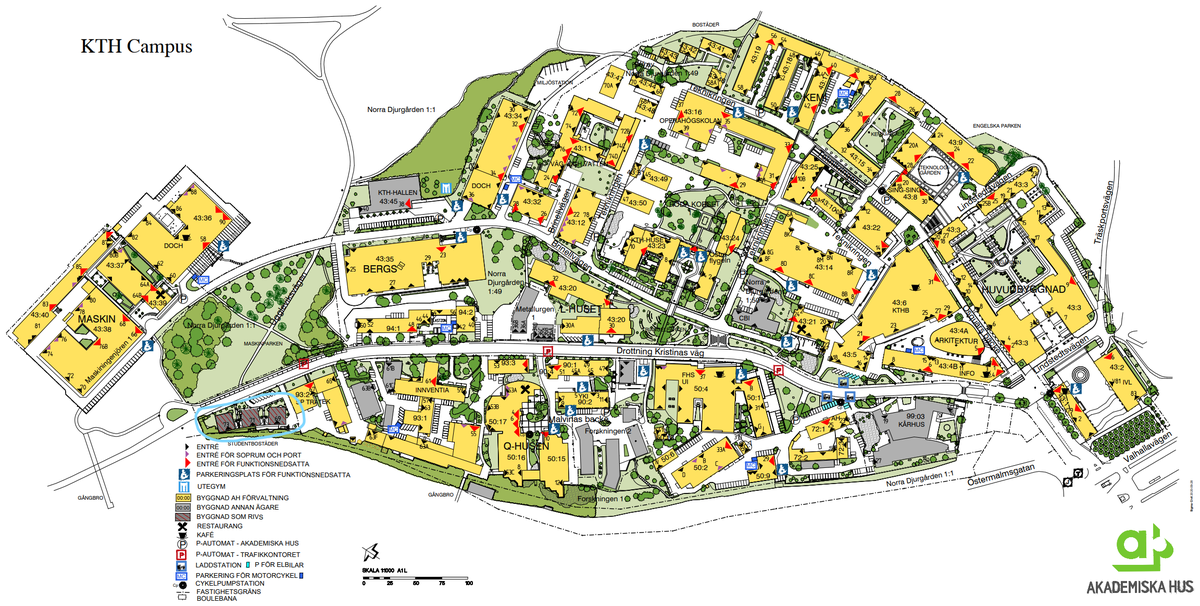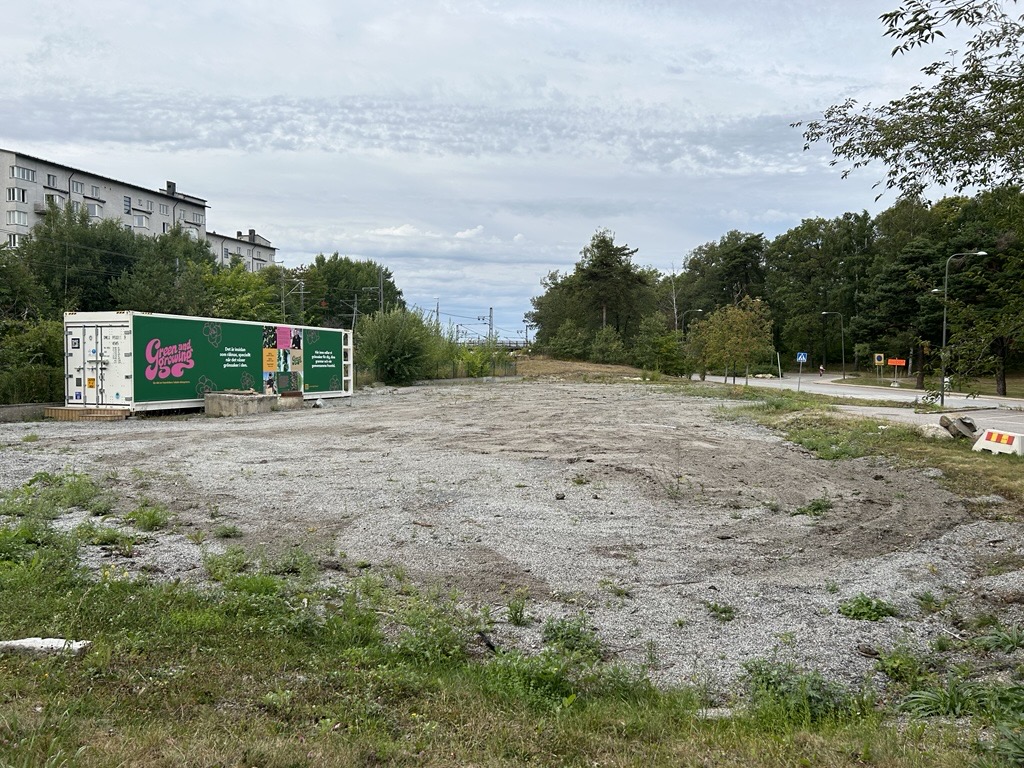The case study site is situated within the KTH Campus in Stockholm, Sweden- a vibrant academic hub renowned for its emphasis on innovation and sustainability. The campus features a mix of historical and modern architecture, creating an inspiring environment for education, research, and collaboration.
Currently, the case study area is an underused gravel space on the edge of the campus, which many perceive as distant and somewhat isolated and is often considered unsafe because of this. The site spans approximately 2,500m2 and is a flat, gravel-covered area with a few trees lining the path. To effectively carry out the project, the design proposals should focus on transforming this space into a multifunctional area that integrates agricultural activities to promote productivity, social engagement and recreation.
The site is positioned along Drottning Kristinas väg, a major corridor connecting KTH to the Albanova, Albano, and Frescati campuses. It is a 10-minute walk from the nearest public transport and just 5 minutes from the closest restaurant. It is adjacent to a vacant building and a park across Drottning Kristinas väg, with a railway line running behind it, further adding to its sense of separation. Despite these challenges, its strategic location presents a valuable opportunity to transform the area into a dynamic space that enhances connections to neighbouring campuses while addressing concerns related to safety and accessibility.
It is located on the western side of the KTH Campus, surrounded by Nationalstadsparken, the Royal National City Park. Within the area, there is an inspection well connected to Stockholm City’s main sewer system, and utility connections for electricity and water have been extended from the nearest building. The foot traffic in this area is relatively low, consisting mainly of campus residents- namely students, researchers, and their families - along with campus staff. Additionally, occasional pedestrians and cyclists pass through, using Drottning Kristina’s väg as a route between the city centre and Brunnsviken.
Currently, a research container operated by ‘Green & Growing’ rents land on this site. The company specialises in urban farming, producing and selling salads and spices to Swedish food markets. The research container is connected to the on-site electricity and water supply.

